Physiology of nutrient acquisition: Ion Uptake LECTURE 1
1/59
There's no tags or description
Looks like no tags are added yet.
Name | Mastery | Learn | Test | Matching | Spaced |
|---|
No study sessions yet.
60 Terms
Essential minerals
inorganic chemical elements
Required for the completion of life cycle of plant and animals
Where found?
Cycle continuously through all organisms
How enter the plants
enter the biosphere via plant roots
uptake from the soil
As plants are autotrophs
Once plant has all the inorganic elements and water and sunlight
→ Can synthezize all organic compounds it needs
How many minerals nutrients needed
16
including C O and H
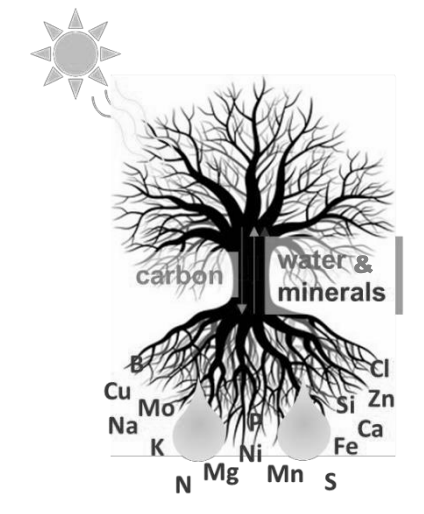
Due to this
plants can be cultivated hydroponically
without any soil
used commercially
If not enough nutrient
Cause diagnostic deficiencies
negatively impact plant perfermance
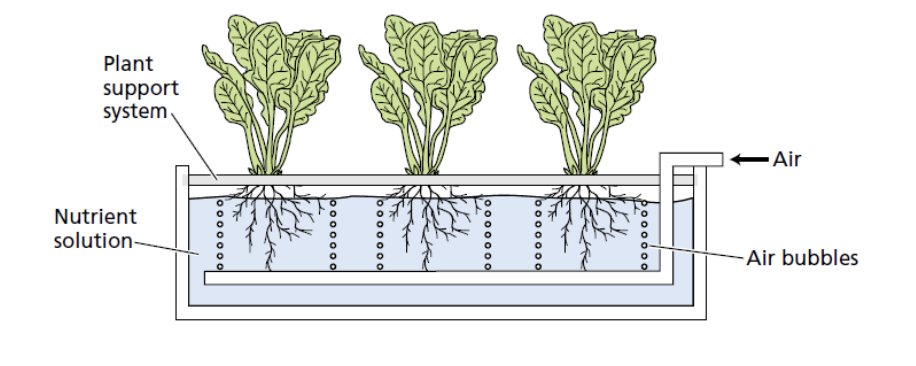
Diagnostic symptoms
Chlorosis
Anthocyanin accumulation
Necrosis
Stunted growth
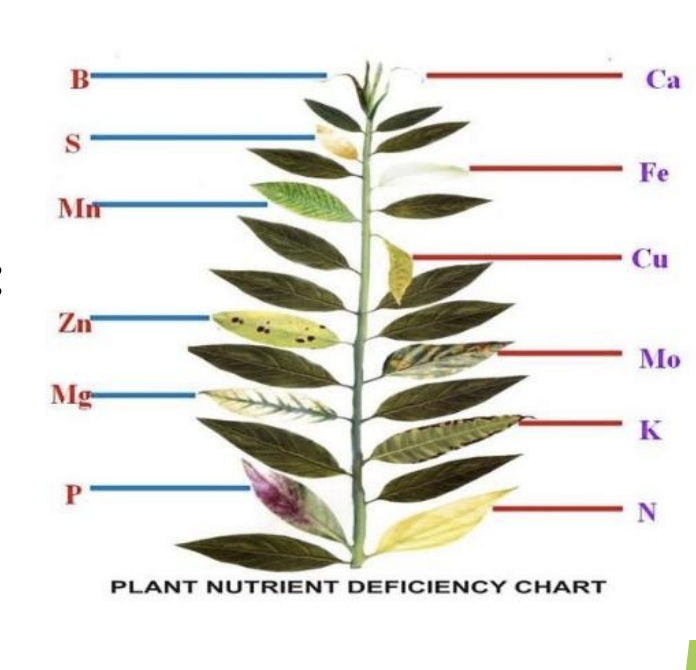
Relevance for food security
most agricultrual soils are deficient in mineral nutrients
e.g N, P or K
agricultural yields depend on fertiliser addition to reach critical concentration
Relationship between growth/yield and nutrient concentrations depends on zones
deficiency
Adequacy
toxicity
→ varies between different plant species
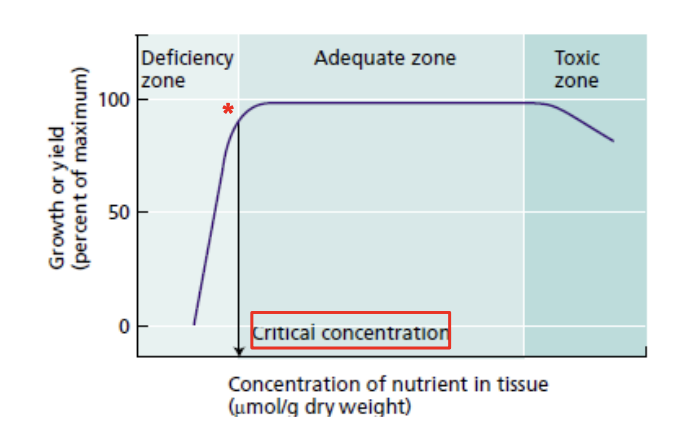
Critical concentration
Minimum tissue concentration that
correlates with maximum growth/yield
Plant mineral nutrition is extremely active area of research:
Nutrient uptake
nutrient use efficiency
development of alternative fertilization strategegies
Needed for
sustainable feeding growing population
with changes ecosystems

Root architecture
Develop an extensive surface area
for soil exploration
e.g 16 week-old rye
surface area is over 500m2

Soil
Heterogenous
Due to this
Root system architecture (RSA) will determine the abiltiy of a plant to secure mineral resource
Basic anatomy of all root types
conserved
Varies between monocots and dicots
Varies between species
Dicots RSA
Prominent central axis
Tap roots
have lateral roots radiate (allorhizic)
net formation of veins in leaves
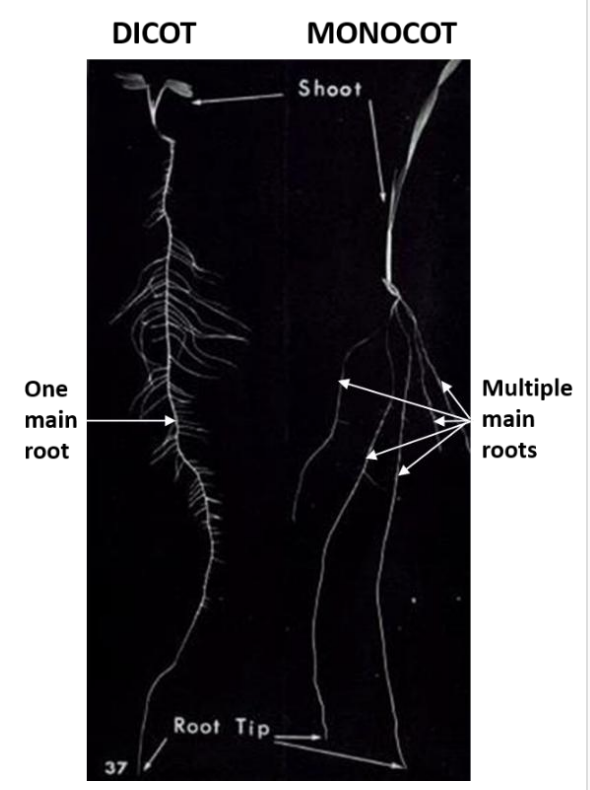
Monocots RSA
many main roots
give rise to lateral roots
parallel veins
→ creates fibrous root system
secondary homorhizic
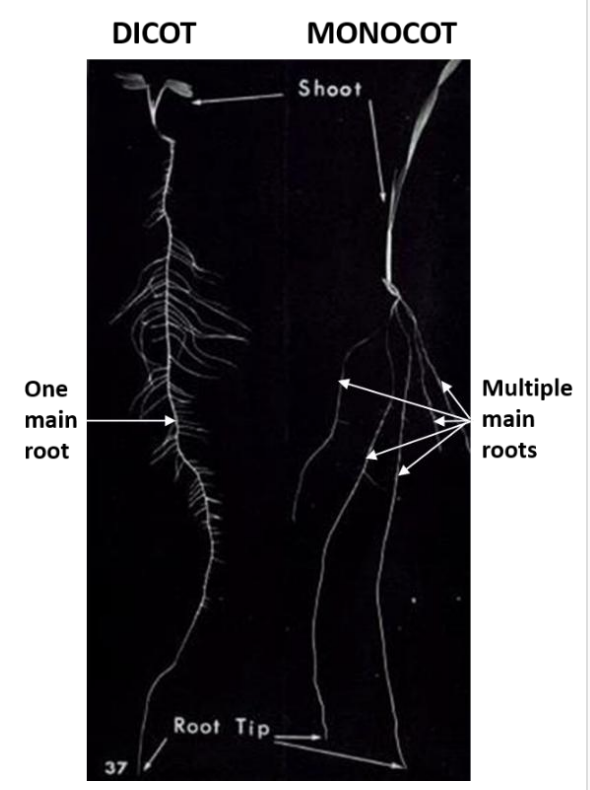
How varies between species
shallow or deep
branched or unbranched
What soil is made of:
Mixture:
organic and inorganic particles
water with dissolved minerals
Air (CO2, O2, N2)

How to mineral ions move towards root surface
Bulk flow→ with water
Diffusion
What affects mineral uptake
transpiration rate
mineral ion concentration in the soil
root ahir SA
Due to soil chemistry
charges
pH
transpoirtaion rate and mineral ion concentration
determine rat of water flow
thereby amount of mineral provided to the root
Root hair
make intimate contact with all soil phases
increase root surface area for ion uptake
Trichoblast
have 30x the SA of an atrichoblast
Soil chemistry
Organic and inorganic soil particles are polyanionic
THEREFORE→ adsorb cations (K,Mg, Mn, Ca, NH4)
→ forms nutrient reservoir
Then how to plants get these cations if attracted to soil?
Cation exchange:
+ changed nutrient replaced
plant can then extract cations from soil
Cation Exchange Capacity
Inherent soil characteristic
depends on soil compositions
high CEC→ high clay or organic matter
→ able to provide more nutrients to plants
low CEC→ sandy soil

Root growth pH favoured at
pH 5.5-6.5 slightly acidic
How this pH happens?
Root respiration (production of energy for root growth
Decay of organic matter
→ generate CO2:
equilibriates with soil water
→ produces H+ ions
contributes to the acidity of the soil
What about anions?
Nitrate
phosphate ions
Repelled by the polyanionic particles surfaces
Nitrate NO3-
remain in the soil fluid
prone to leaching via water movement
very mobile in soil
concentrations can really vary
Phosphate H2PO2-
preciptates at alkaline and acidic pH
extremely immobile
extremely low abundunce
Plant demand for N vs P
10x higher demand for N than P
But short fall of P
P concentrations are 1000x lower than N
→ 100x shortfall
Due to this
not enough P in soil for plants
N often in run off (concentrations really vary)
eutrophication
→ limits plant growth
Roots can
modulate the pH of soil
sense low availability of nutrients
Modulate soil pH
Via extrection of protons
Sense low avilabiltiy of e.g phosphate
Induce the production and release of organic acids (anions)
→ Anion exchange
Specialised proteoid roots (cluster roots) for phosphate scarcity
Used for anion exchange
e.g in Lupinus and Macademia
Produce vast amounts of carboxylate ions
aid phosphate mobilization

Radial root anatomy
Root epidermis (rhizodermis)→ ion uptake
Cortex→ storage and ion uptake
Endodermal cells
casparian strip
Stele
Root epidermis
trichoblasts
atrichoblasts
→ for ion uptake
root hair increasing SA
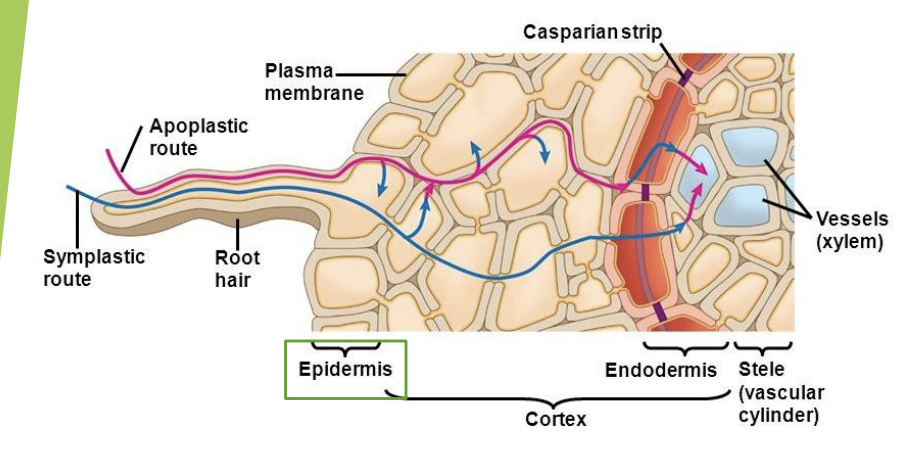
Cortex
Ground tissue
→ high storage capacity
(at higher ion availability → ion uptake)
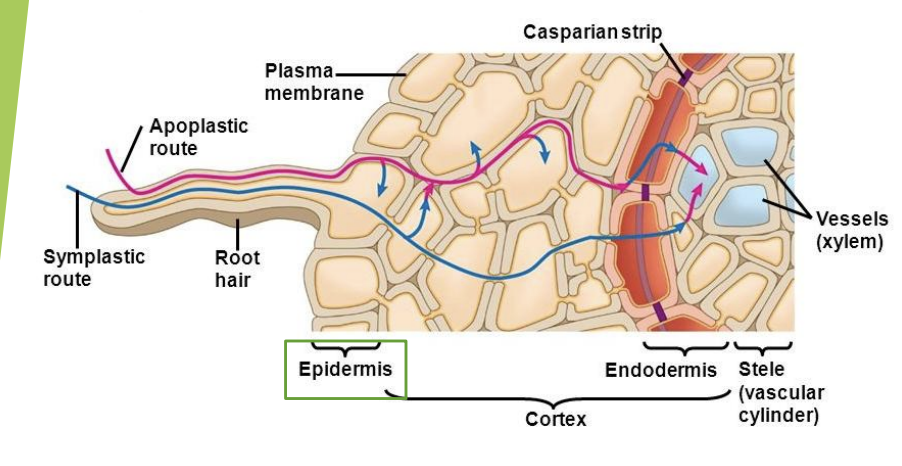
Endodermal cells
Radially surrounded by hydrophobic casparian strip
→ provides diffusion barrier between the root centre and periphery
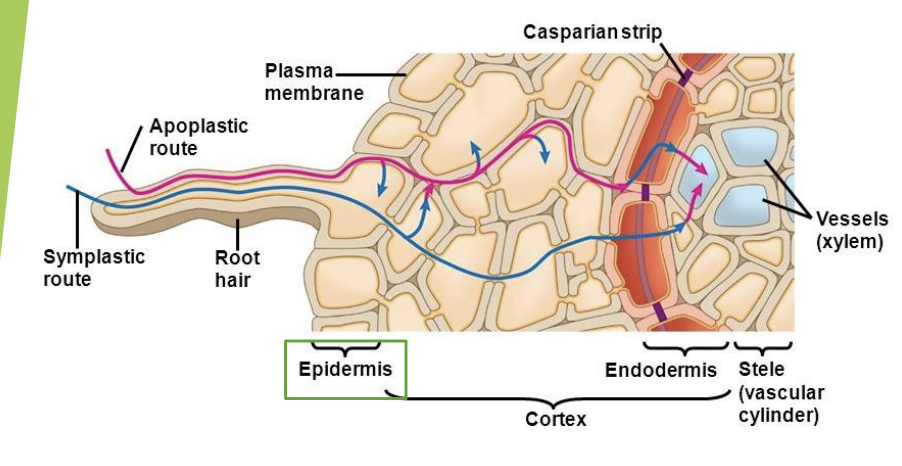
Stele
Contains vasculature for long distance transport
of photosynthates (phloem)
water and minerals (xylem)
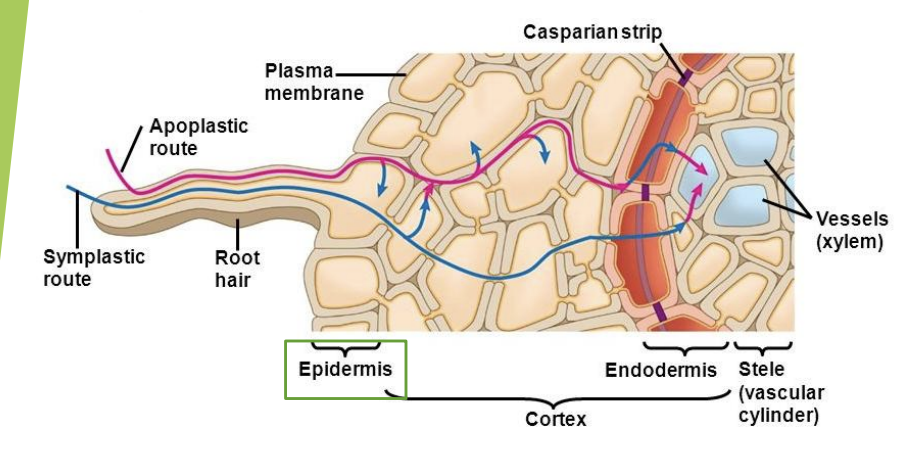
As the xylem exchanges freely with the liquid phase…
ions enetering into the stele apoplasts
also enter into the transpiration stream
driven by the negative pressure potential
Route taken by minerals into the stele
Symplastic
through plasmodesmata
Apoplastic
Apoplastic way
Apoplastically in cell wall space
only until the hydrophobic casparian strip
enter the symplasm
Once in the stele
minerals releaesed into apoplast
Enter the pressure-driven bulk flow of water
into xylem vessels
Functionally similar to animal intestinal epithelia
Resemble and inverted gut
Selective uptake mediated by epithelial brush border or root epidermis (selective uptake)
tight junctions and Casparian strip (barrier to diffusion)
seal neighbouring cells and block diffusion
Polarity→ peripheral central polarity in the root
basolateral polarity in the animal epithelia
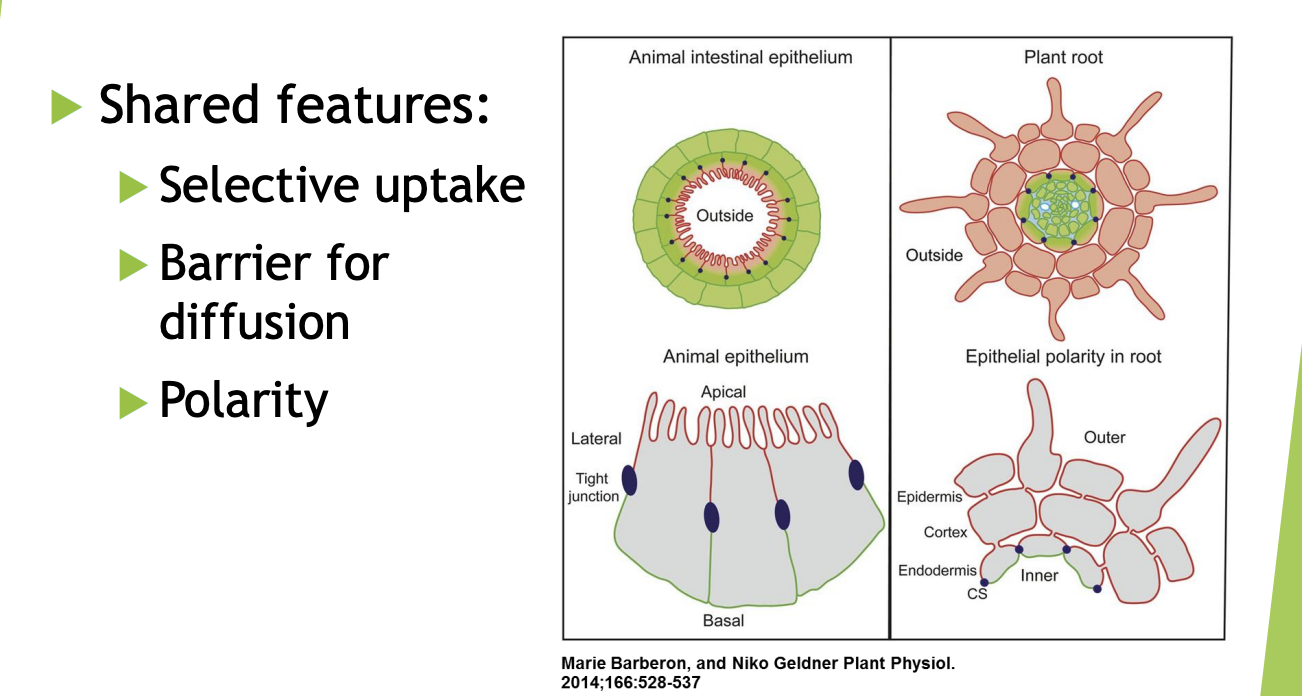
How identidied plant ion transporters
plant gene rescue→ yeast complementation
Yeast strains mutated in transporter function of interest
transformed with a population of cDNA from plant roots
restoration of growth indicated functional complementation by plant gene
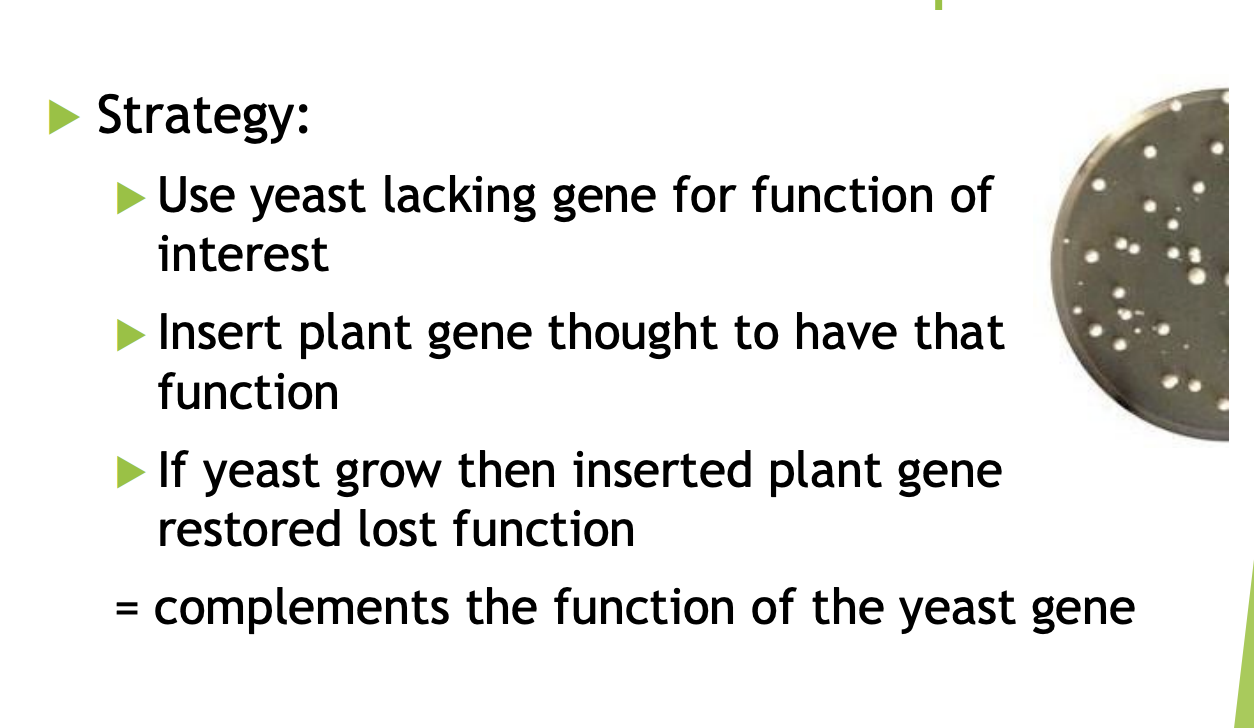
K+ inward rectifying channels in Arabidopsis
Shaker type K+ channels
AKT1 and KAT1
Features:
4 subunits
each with
6 TM domains
voltage sensing region of segment 4
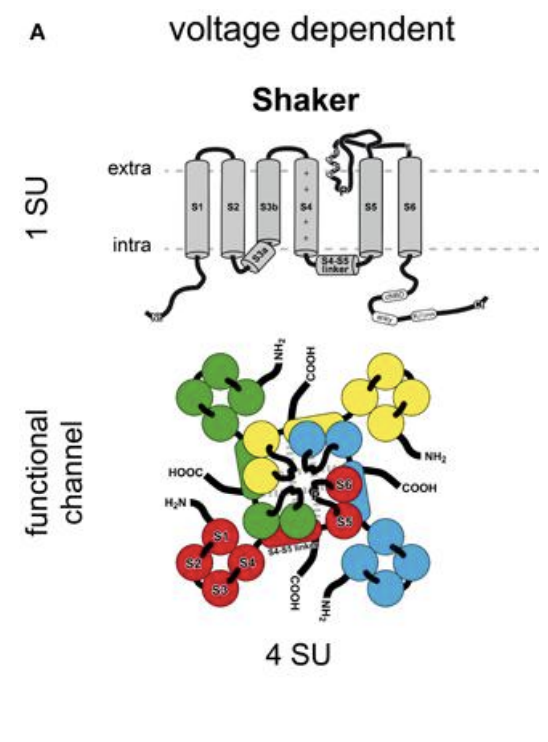
AKT1
one of the two major uptake systems for K+ from the soil
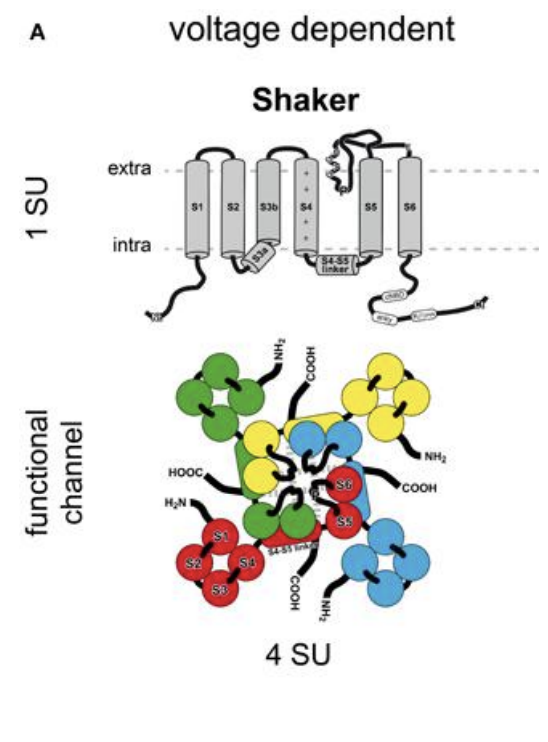
Recap of uptake methods

Complex kinetics→ high and low affinity transport systems
e.g Potassium uptake
e.g Nitrate uptake
Potassium uptake
biphasic kinetics→ two distinct transport proteins involved
At 1mM → high afffinity
active symport
potassium starved
At higher concen→ low affinity system
through K+ channels
high potassium fertility→ so need a lower affinity
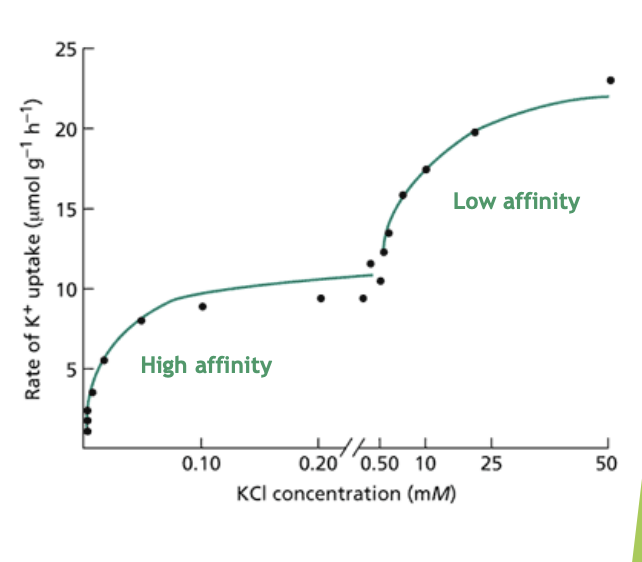
Nitrate uptake→ biphasic due to dual affinity transporter
Transporter CHL1
Low nitrate availability
CHL1 phosphorylated
convert low affinity into high affinity transporter
High nitrate availability
CHL1 not phosphoylated
operates at low affinity
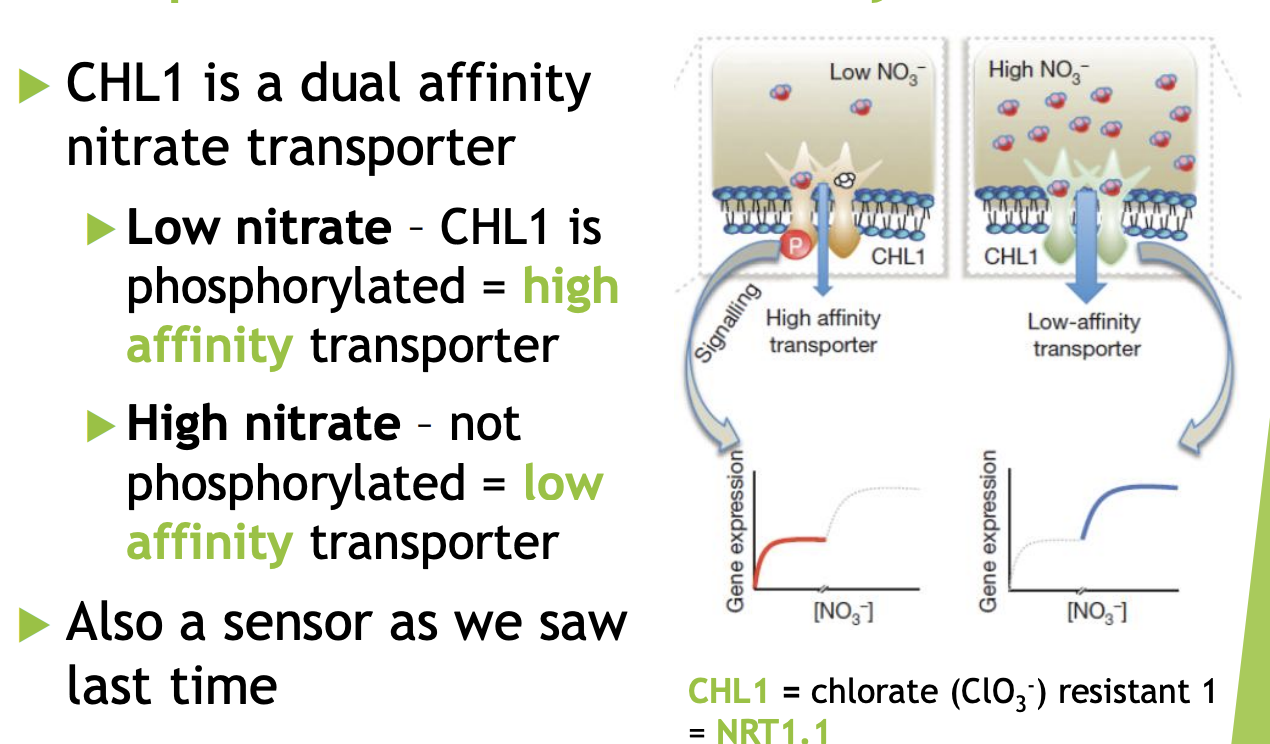
THEREFORE CHL1
Operates as
nitrate sensor
regulates nitrate induced gene expression
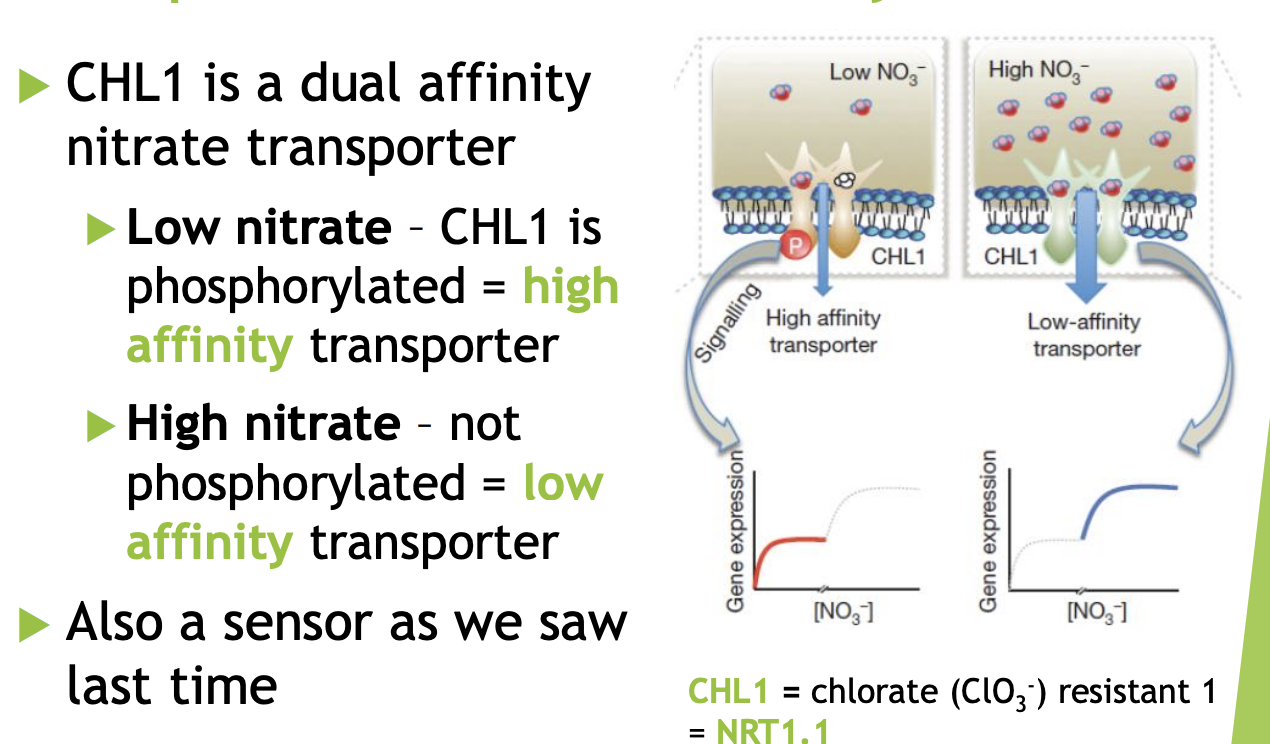
Once the ion has reached the stele
exists symplast at pericycle and xylem parenchyma
loaded into xylem
further distribution through plant
→ion efflux is highly regulated
How ion efflux regulated
involves dedicated channels/carriers
e.g SKOR (outwardly rectifyng K+ channel)
e.g NRT1.5 (low affinity transporter)
How is SKOR regulated
Expression is inhibited by stress hormone ABA
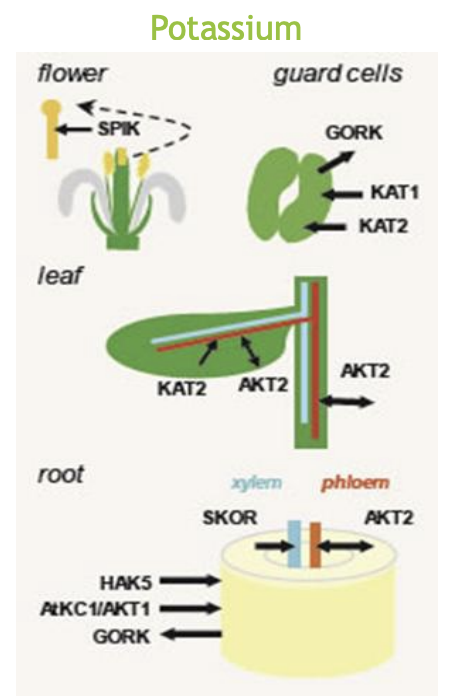
What this suggests
control of K+ translocation to shoot
part of plant drought response
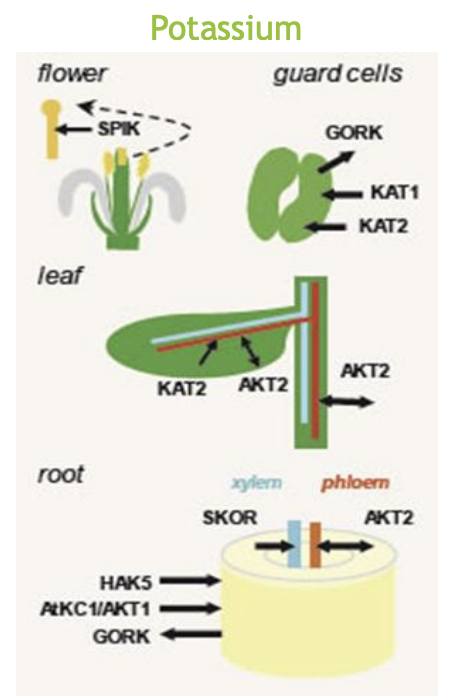
Plant ion influx/efflux activies
involves diverse channels/carriers
with discrete roles in
root uptake
sub-cellular partioning
xylem loading/unloading
re-distribution
e.g Arabidospsis has 73 genes coding for different NO3 transporters)
